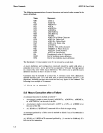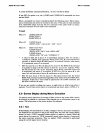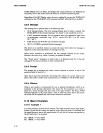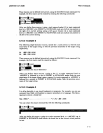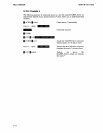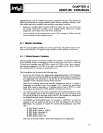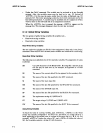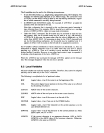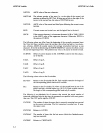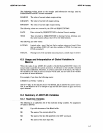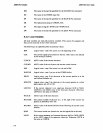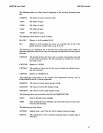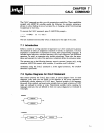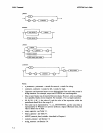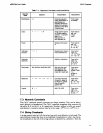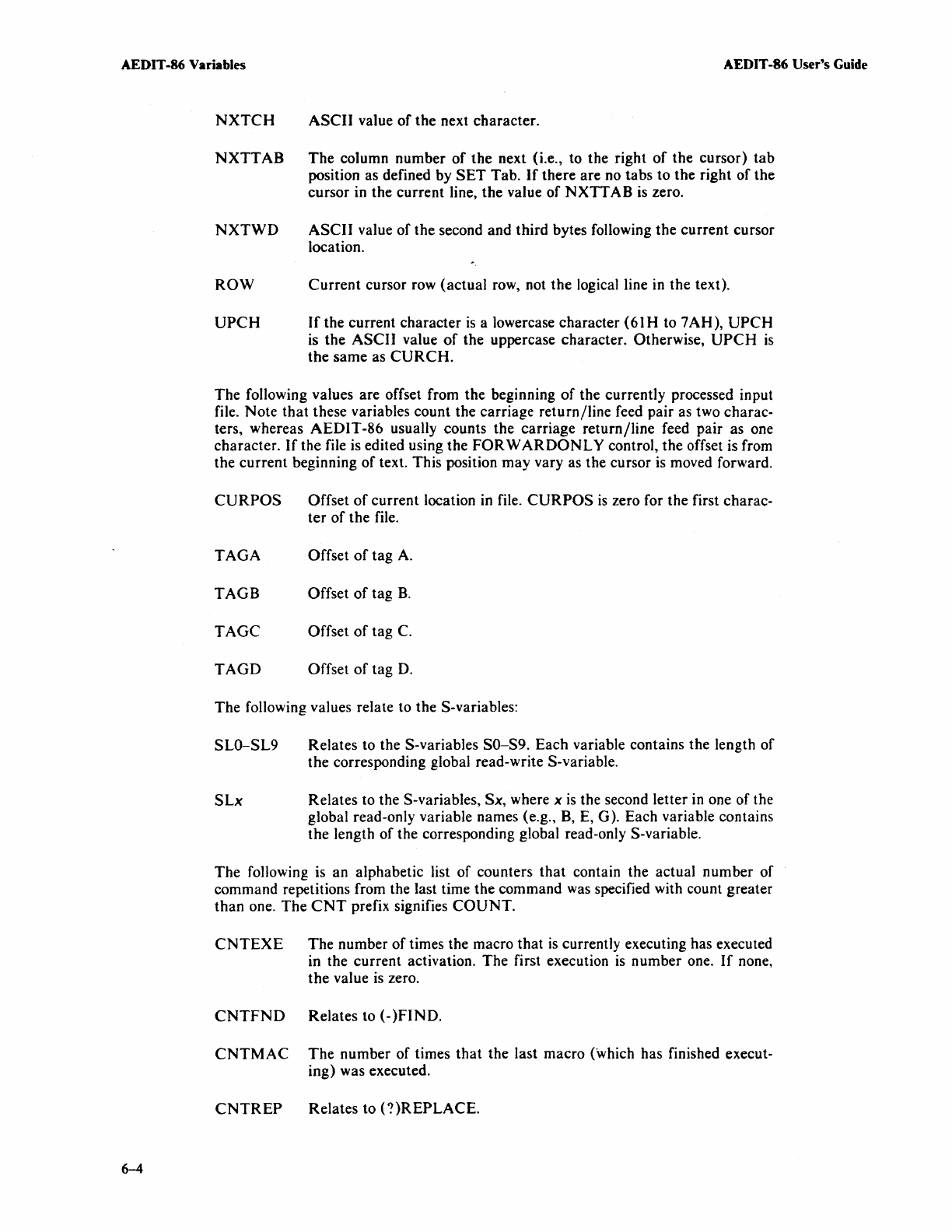
AEDIT -86 Variables AEDIT -86 User's Guide
6-4
NXTCH
ASCII
value
of
the
next character.
NXTTAB
The
column number
of
the
next (Le., to the right
of
the cursor)
tab
position as defined by
SET
Tab.
If
there are no tabs to the right of
the
cursor in the current line,
the
value
of
NXTTAB
is zero.
NXTWD
ASCII
value
of
the second and third bytes following
the
current cursor
location.
ROW
Current
cursor row (actual row, not
the
logical line in
the
text).
UPCH
If
the current character
is
a lowercase character (61 H to 7
AH),
UPCH
is the
ASCII
value
of
the uppercase character. Otherwise,
UPCH
is
the
same as
CURCH.
The following values are offset from the beginning
of
the currently processed input
file. Note
that
these variables count the carriage
return/line
feed pair as two charac-
ters, whereas
AEDIT-86
usualJy counts the carriage
return/line
feed pair as one
character.
If
the file is edited using the
FORWARDONL
Y control, the offset is from
the current beginning
of
text. This position may vary as the cursor
is
moved forward.
CURPOS
TAGA
TAGB
TAGC
TAGD
Offset
of
current location in file.
CURPOS
is
zero for the first charac-
ter
of
the file.
Offset
of
tag
A.
Offset
of
tag
B.
Offset
of
tag
C.
Offset
of
tag
D.
The
following values relate to the S-variables:
SLO-SL9
SLx
Relates to the S-variables SO-S9. Each variable contains the length
of
the
corresponding global read-write S-variable.
Relates to the S-variables, Sx, where x
is
the second letter in one of the
global read-only variable names (e.g.,
B,
E, G). Each variable contains
the
length
of
the corresponding global read-only S-variable.
The following is an alphabetic list
of
counters
that
contain the actual number
of
command repetitions from the last time the command was specified with count greater
than
one. The
CNT
prefix signifies
COUNT.
CNTEXE
The number
of
times the macro
that
is
currently executing has executed
in the current activation.
The
first execution
is
number one.
If
none,
the
value is zero.
CNTFND
Relates to
(-)FIND.
CNTMAC
The
number
of
times
that
the last macro (which has finished execut-
ing) was executed.
CNTREP
Relates to
(?)REPLACE.



